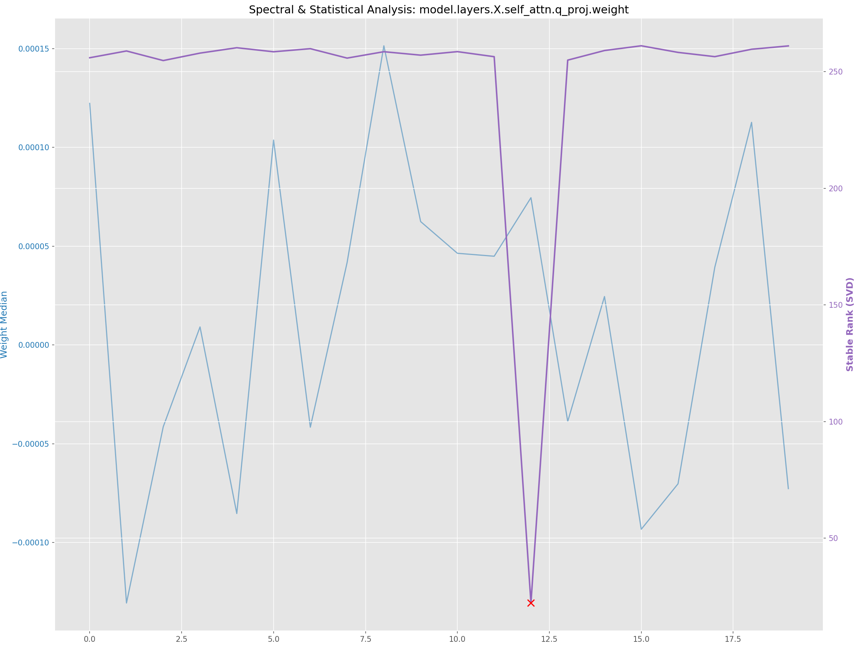
On October 2024, attackers targeted Israeli organizations by exploiting a trusted source: ESET’s local partner, Comsecure. Apparently they compromised Comsecure’s infrastructure and used it to send phishing emails disguised as official communications from ESET.
These emails contained a malicious download link purported to be a legitimate tool but actually housed wiper malware (I internally named OctoberSeventh) designed to disrupt data from victim systems.
What makes this attack particularly interesting is the exploitation of an established partner of a globally trusted cybersecurity firm, leveraging the inherent trust that customers place in such relationships. By embedding wiper malware in files that appeared coming from ESET, the attackers succeeded in distributing a destructive payload under the guise of a routine security update.

Phishing email sample
The motivation behind this attack appears to be geopolitically driven, given its exclusive focus on Israeli entities during a time of heightened regional tension. In my opinion it illustrates the evolving sophistication of cyber threat actors who not only rely on advanced malware but also on sophisticated social engineering and supply chain infiltration techniques.
INSIGHTS
I tried to have a quick look to the code; the malware employs several self-defense mechanisms designed to thwart analysis attempts. Their core purpose is to identify if the malware is being executed within a debugger and, if so, to trigger a controlled crash, effectively terminating the analysis session and hiding its malicious behavior.
It first probes the CPU’s capabilities, using IsProcessorFeaturePresent to determine if the __fastfail instruction is supported. This instruction, a low-level mechanism for triggering fast fail exceptions, provides a rapid method for terminating a program. If the CPU supports __fastfail, the malware immediately utilizes it, causing an abrupt halt to its execution and hindering any debugger’s ability to follow the code’s flow.
If the CPU does not support __fastfail, the malware resorts to a more direct approach, explicitly checking for a debugger’s presence using the IsDebuggerPresent function. This Windows API function returns a clear indication of whether a debugger is attached to the malware’s process. Should a debugger be detected, the malware proceeds to construct a custom exception.
This custom exception is crafted to mimic a legitimate program crash while obscuring the true cause of the failure. The malware first initializes a large buffer, v18, filling it with null bytes. It then writes specific values to this buffer, mimicking the structure of a CONTEXT record, which holds processor register data and thread context information typically captured during exceptions. The malware populates this buffer with values from various registers, including general-purpose registers (EAX, EBX, EDI, ESI, etc.), segment registers (CS, DS, ES, etc.), the stack pointer (ESP), the instruction pointer (EIP), and the flags register (EFLAGS).
To trigger the exception, the malware calls RaiseException, using the exception code 0xE06D7363. This code, unlikely to be handled by any default exception handlers, ensures that the exception will be caught by the malware’s top-level exception filter. This custom filter, designed to prevent interference from debugging tools, is likely programmed to terminate the malware’s process upon encountering this specific exception, effectively halting further analysis within the debugger.
Following the sub_4025E0 initializes a security cookie (__security_cookie) using a combination of system time, process/thread IDs, and performance counter, may be used for integrity checks later on.
The cookie, crafted from a combination of system time retrieved using GetSystemTimeAsFileTime, process and thread IDs acquired via GetCurrentProcessId and GetCurrentThreadId, and performance counter readings obtained using QueryPerformanceCounter, acts as a fingerprint for the malware’s code. By incorporating these system values, the security cookie becomes highly unique to each infection.
It begins by dynamically resolving the base address of the “KERNEL32.DLL” module. This is achieved by traversing the Process Environment Block (PEB), a system structure containing information about loaded modules, and locating the entry for “KERNEL32.DLL.”
This approach avoids using the standard GetModuleHandle function, which could be easily hooked by security products, making the malware’s actions more difficult to trace.
Further decrypted strings reveal resolution calls to WinHttpOpen, WinHttpConnect, WinHttpOpenRequest, WinHttpSendRequest, WinHttpReceiveResponse and WinHttpCloseHandle.
These are all standard WinHTTP API functions for making web requests. It then constructs an HTTP GET request to www[.]oref[.]org[.]il/alerts/RemainderConfig_eng.json using hardcoded user agent string Mozilla/5.0 (Windows NT 10.0; Win64; x64) AppleWebKit/537.36 (KHTML, like Gecko) Chrome/109.0.0.0.
It then downloads the content of the JSON file and stores it in memory. If the download is successful it opens a file named “EFsoIAEBEwpwcDoBGAYBORFPXlECQ11eVA==” (decrypted to “C:\Users\Public\conf.conf“) in write mode “w”, copies itself under Users/Public and prepares the paths for file overwriting.
As seen, the malware utilizes a series of obfuscated strings, which are actually API function names encrypted using a simple XOR cipher with the hardcoded key “Saturday, October 07, 2023, 6:29:00 AM.” Decrypting the string “Hw4VET4NAwtNUjYi” reveals the LoadLibraryA function as well. See “Appendix” to get a script usefull to decrypt them.
STRINGS DECRYPTION ROUTINE
The string decryption routine within this wiper utilizes a custom XOR cipher implementation, augmented by a character mapping technique. The function sub_401160 serves as the core decryption engine, accepting the encrypted string and a hardcoded key string (“Saturday, October 07, 2023, 6:29:00 AM“) as input. The initial step involves Base64 decoding. The function determines the encoded data’s length by traversing the input string until it encounters a non-Base64 character, using the lookup table byte_41DE18 to identify characters outside the Base64 alphabet.
A memory buffer, sized to hold the decoded bytes, is allocated. Decoding proceeds in blocks of four encoded characters, which are mapped to their numeric values via the byte_41DE18 table. These values are then bit-shifted and combined to generate three bytes of decoded data, which are written to the buffer. This process iterates until the entire input string is decoded. Following Base64 decoding, the function allocates a second buffer to store the decrypted string. The size of this buffer is calculated based on the decoded data’s length and the key string’s length.
The XOR decryption operates on each byte of the decoded data. For each byte, using the decoded data’s index and the key’s length, the index of the corresponding key character is determined. This ensures cyclic repetition of the key string to match the decoded data’s length. The core XOR operation is then applied between the current decoded byte and the ASCII value of the corresponding key character. This generates a single decrypted byte, which is written sequentially to the output buffer, forming the decrypted string character by character.
The function relies on the byte_41DE18 lookup table to optimize character-to-numeric value conversion, eliminating the need for repeated calls to the ord function. This table-driven approach streamlines the XOR operation by providing readily available numeric values for each ASCII character. Upon completing the decryption, sub_401160 null-terminates the output buffer, resulting in a valid C-style string containing the decrypted data. This string is then returned to the calling function for use within the malware.
CORE WIPER LOGIC
The function sub_4016C0 serves as the operational core of the wiper malware, orchestrating the files manipulation and system disruption activities. Upon entering this function, the malware first initiates a short delay using the Sleep function, pausing for 1000 milliseconds and enumerating drives using GetLogicalDrives.
Following the malware calls sub_4015B0, which appears to lay as the groundwork for the wiper’s operations. The malware proceeds to resolve the addresses of essential Windows API functions from “KERNEL32.DLL” and “User32.dll,” utilizing decrypted strings to mask its intentions. These functions include CreateFileW (decrypted from dword_D593C8), SetFileAttributesW (decrypted from dword_D593D0), CloseHandle (decrypted from dword_D59504), PostMessageW (decrypted from dword_D593E0), and SendMessageW (decrypted from dword_D593E4).
After this, the malware enters its main operational loop supporting multi-threading. This loop forms the heart of the wiper’s attack strategy, driving a continuous cycle of file destruction and system manipulation. Within each iteration of the loop, the malware calls CreateFileW, creating handles to the targeted files and directories. With file handles secured it calls the sub_408050.
This function, designed for data writing, overwrites the contents of the targeted files with large blocks of data, effectively rendering them unusable. Significantly, this initialization involves filling the buffer with null bytes (ASCII value 0) and random bytes could be used to disrupt the targeted files.
A crucial observation pointing towards overwriting lies in the size parameter passed to sub_408050. This parameter appears to be directly related to the target file size, suggesting the wiper might be writing a stream of bytes equal to the file’s size, completely filling it and effectively obliterating the original data.
To further hide its actions, the malware employs SetFileAttributesW to potentially modify the attributes of the affected files. The wiper’s manipulation appears to extend beyond simple file overwriting as it also utilizes MoveFileWithProgressW (decrypted from dword_D59510) to potentially prevent an easy recovery.
Before returning, the malware displays the message “Hey ESET, wait for the leak.. Doing business with the occupiers puts you in scope!” by using MessageBoxA.
ATTRIBUTION
Diffucult to say; My personal speculations are directed towards TA402 (https://malpedia.caad.fkie.fraunhofer.de/actor/ta402) but I have no definitive evidence. Obviously, these cannot be considered conclusive in attributing this attack 🙂 . TA402 is believed to be aligned with Palestinian espionage interests, primarily targeting intelligence collection efforts.
IoC
SHA256: 2abff990d33d99a0732ddbb3a39831c2c292f36955381d45cd8d40a816d9b47a
APPENDIX
Python script to decrypt internal malware strings:
import base64
def decrypt_string(encrypted_string, key_string):
"""
Author:
Emanuele De Lucia
What it does:
Decrypts the given string using a XOR cipher with the logic of OctoberSeventh wiper.
Args:
encrypted_string: The string to decrypt.
key_string: The key to use for decryption.
Returns:
The decrypted string.
"""
key_len = len(key_string)
decrypted_bytes = bytearray()
decoded_bytes = base64.b64decode(encrypted_string)
for i, byte in enumerate(decoded_bytes):
decrypted_bytes.append(byte ^ ord(key_string[i % key_len]))
return decrypted_bytes.decode()
encrypted_string = "AxMbFhcXEkoeZiYRBxs="
key_string = "Saturday, October 07, 2023, 6:29:00 AM"
decrypted_string = decrypt_string(encrypted_string, key_string)
print(f"Decrypted string: {decrypted_string}")